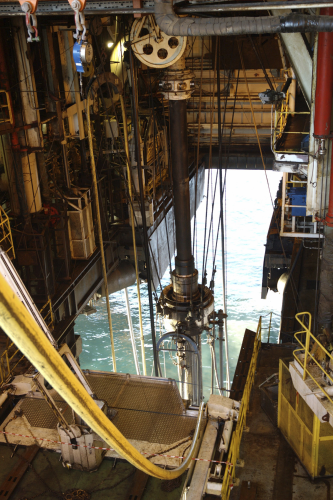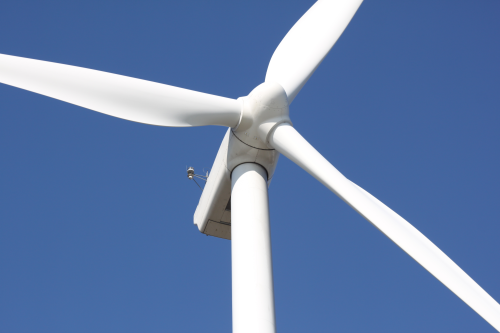

Glass fibre reinforcement manufacturer AGY is highlighting its S-2 Glass® portfolio of products as a new generation of composite reinforcement for the oil and gas industry.
According to AGY, S-2 Glass has been designed as a high-performance reinforcement to offer the physical and chemical characteristics needed to drive composite down-hole tooling into more aggressive well environments, new applications, and longer life cycle product lines. AGY adds that as well depths increase, so do down-hole temperatures and pressures, thus creating a progressively more hostile environment for the materials involved. The company explains that composites produced using S-2 Glass as reinforcement can be more than 40% stronger than those made with traditional E-Glass fibre, and can provide up to 200°C (392°F) additional thermal resistance without compromising the drillability of the final part. The resulting improved mechanical properties allow the use of composite frac plugs and other tooling in well sites that previously have been restricted to metal tools only. In addition, plug and tool use life in all well types can be increased significantly within all types of wells. S-2 Glass also provides salt-water corrosion resistance - a known failure issue with composites made from E-Glass reinforcements. Any composite is only as good as the linkage that holds its parts together. AGY has developed a portfolio of sizing systems for both thermoset and high-temperature thermoplastic polymers to ensure that S-2 Glass can meet customer requirements in as wide a range of resin systems as possible. “Tailoring the linkage between the glass surface and the polymer matrix to achieve optimum chemical bonding can be the difference between the system, and thus the part, holding or breaking,” said Drew Walker, Chief Executive Officer of AGY. “Some fibre manufacturers try to take an easier route by having a one-size system that is ‘okay’ for several polymer systems. However, whatever is ‘okay’ for many things is rarely ‘excellent’ for anything. In today’s demanding oil and gas industry only ‘excellent’ will do,” continued Walker.
New thermoplastic sizing
AGY has also introduced over the past two years a number of sizing systems for use in thermoplastic composite applications. AGY says that the continued growth in the use of these materials has been evident in the number of requests the company has handled during this time and the diversity of the markets served. AGY can now offer its range of S-2 Glass® and E-Glass yarns complete with thermoplastics compatible sizes for use in woven fabrics and a variety of other conversion steps. The new yarn products launched by AGY have a sizing system tailored to achieve the optimum bond between the fibres and the thermoplastics but allow the use of the fibres in traditional glass fibre conversion processes. Some fiber manufacturers have a size system that works for several polymer systems; however the tailoring of the sizing systems by AGY shows improved performance over these multi-use systems as they are designed to meet the requirements of a much narrower range of polymers. In today’s demanding markets this ability to offer a unique solution to markets such as aerospace, sporting goods, consumer electronic enclosures, and medical devices has led to a significant demand for new yarn type products. “The interest in our new sizing systems has continued at a high pace. We started with products aimed for the formulators who used traditional chopped fibres and quickly were seeing requests for rovings and now into our unique range of S-2 Glass yarns,” added Drew Walker. “The development for our sizing programmes into a range of products has been fast, our initial developments gave us good information on resin compatibility and with our experience in direct sized fibres we have been able to translate those sizes designed for chopped products into the products requested for S-2 Glass yarns. The whole range of thermoplastic products have been shown to increase performance over traditional E-Glass but also over other high performance glass fibres and with AGY’s advantage in flexible manufacturing we have been able to offer solutions in formats and compatibility to meet diverse customer requirements”. The new sizing systems are designed to work with a wide range of polymer chemistries and are available on a range of fibre diameters and are suitable for a range of high temperature resin systems such as PEEK, PEKK, PEI, PPS as well as engineering resins such as PA 6, PA6.6, PA11, PA12, PC, and PBT. The sizing can be supplied on E-Glass and S-2 Glass based yarns as well as existing system used on ZenTron® rovings, S-2 Glass assembled rovings and chopped glass fibre formats.
Filling the cost and performance gap
In a further development, AGY has also started production of S-1 HM™ glass in conjunction with CTG/Taishan Fiberglass. The material was developed by AGY and will be produced by CTG/Taishan Fiberglass to fill the cost and performance gap between traditional E-Glass products and higher performance glasses such as AGY’s S-2 Glass® products. CTG/Taishan Fiberglass has scheduled the completion of a new furnace for the end of the second quarter of 2014 with commercial availability of S-1 HM glass fibre rovings beginning the third quarter of 2014. CTG/Taishan Fiberglass is one of the world’s largest glass fibre manufacturers. “We are looking forward to partnering with AGY,” said Mr. Zhiyao Tang, Chairman and President of CTG/Taishan Fiberglass. “We have worked closely together on deciding the optimum timing and business conditions for bringing the S-1 HM product to market. We believe that time is now.” S-1 HM glass was developed primarily for the wind energy market with input from blade and turbine manufacturers. “The excellent balance of performance and cost of S-1 HM glass will enable manufacturers to optimise the design of wind blades, generating a lower weight solution, or additional length to a blade with no additional weight” explained Drew Walker. “The ability to add length to a wind turbine blade allows the turbine to operate at 100% efficiency over a wider range of wind speeds, which in turn can reduce the cost of electricity generated.” AGY’s S-1HM glass has been tested in an array of epoxy and vinyl ester systems in today’s wind turbine blades. While AGY and CGT/Taishan Fiberglass are targeting the wind energy market with S-1 HM, they both believe the material has potential for many other industrial applications. “Since S-1 HM glass is mechanically superior to E-Glass, but much less expensive than the extremely high-end glasses, we feel that S-1 HM will be an excellent fit for composite manufacturers in a wide variety of markets,” said Walker.
This article will be published in the May/June 2014 issue of Reinforced Plastics magazine.
The digital edition of Reinforced Plastics is distributed free of charge to readers who meet our qualifying criteria. You can apply to receive your free copy by completing this short registration form.



